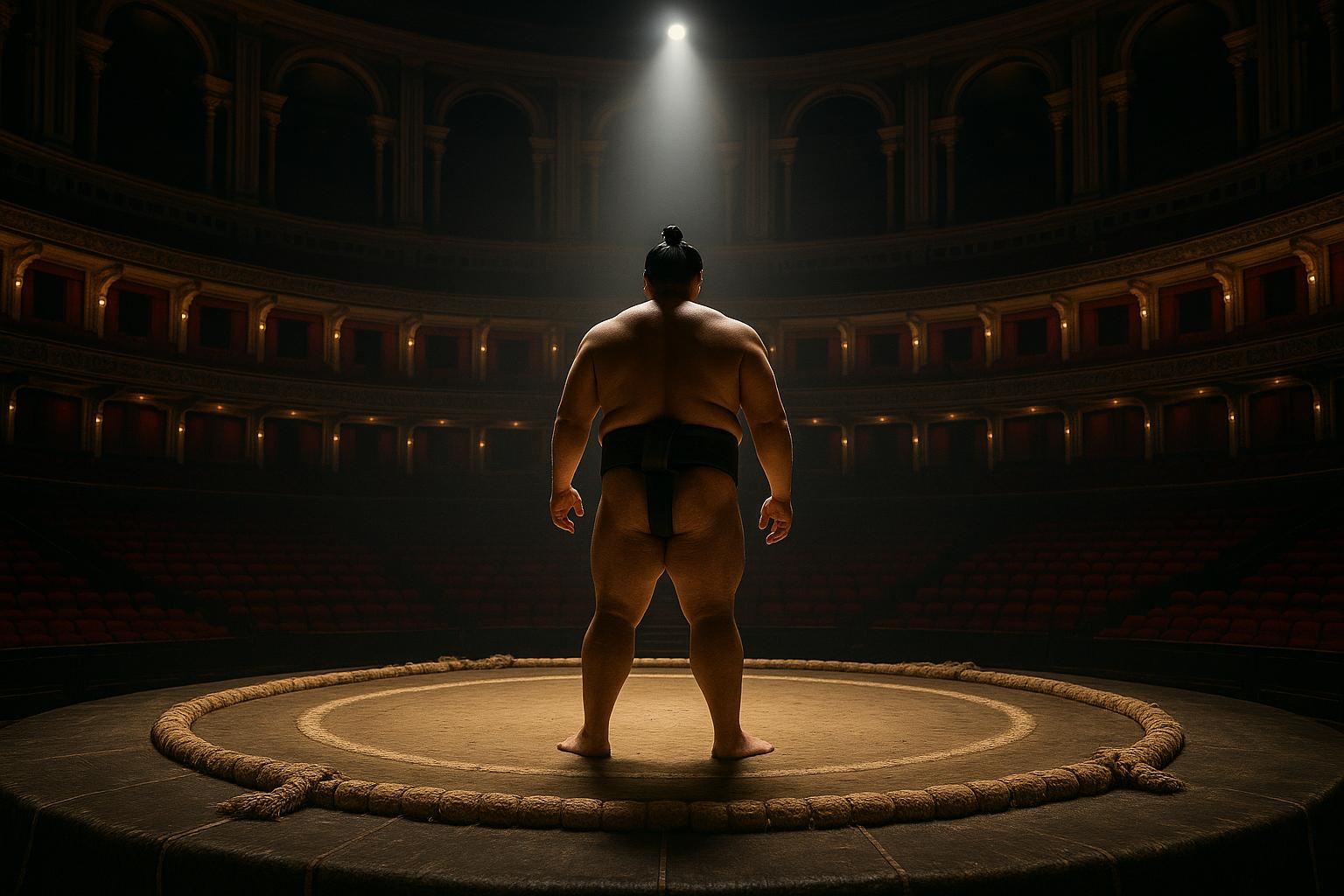Sumo wrestling made a spectacular return to London’s Royal Albert Hall after a 34-year hiatus, captivating packed audiences with a rare five-day Grand Sumo Tournament featuring some of the sport’s elite athletes. This event marks only the second time in over 1,500 years of sumo history that such a prestigious tournament—also known as a basho—has been held outside Japan, the first being at the same venue in 1991. The current tournament, which concluded recently, showcased 40 top rikishi (wrestlers) competing on a specially constructed clay and rice bale platform called the dohyo, preserving the sport’s traditional setting and ceremonial gravitas.
The organisers have invested significant effort to authentically recreate the sumo experience in London. The Royal Albert Hall had to undergo extensive modifications, including the installation of reinforced toilets and new seating capable of supporting wrestlers weighing up to 200 kilograms. Complementing these preparations, the intense dietary demands of the competitors became apparent, with around 11 stones of rice consumed daily and local wholesalers reportedly running out of noodles due to the huge quantities ordered. This behind-the-scenes glimpse highlights sumo’s demanding physical culture, which extends far beyond the matches themselves.
Among the tournament’s highlights was the dominant performance by grand champion Onosato Daiki, who secured victory in the main bout by forcefully tossing Ura Kazuki out of the ring. Another striking moment came from Ukrainian wrestler Aonishiki Arata, whose remarkable debut year continued as he triumphed over Atamifuji Sakutaro despite conceding a significant weight disadvantage of over six stones. Several bouts featured notable size mismatches reminiscent of ‘David versus Goliath’ encounters, including Tobizaru Masaya, who overcame both weight and height deficits to defeat the larger Shonannoumi Momotaro with a stunning throw. Such exciting contests introduced dramatic and dynamic storytelling that engaged both seasoned sumo enthusiasts and first-time spectators alike.
The event blended athleticism with cultural reverence as the audience were reminded by the compere not to approach the dohyo, acknowledged as a “very sacred place.” This ritualistic respect resonates deeply with sumo’s long spiritual heritage, which dates back more than 1,500 years. It is this combination of sport, ceremony, and history that distinguishes sumo as much more than a competitive pastime—a living tradition reflecting Japan’s cultural identity.
The tournament also served as a diplomatic bridge between Japan and the United Kingdom. Since their arrival in London, wrestlers were seen embracing the city’s landmarks, posing for photos at the Houses of Parliament and Buckingham Palace, riding Lime bikes, and even enjoying local snacks such as hot dogs on Westminster Bridge. This warm cultural exchange illustrated the event’s broader ambition to share and spread appreciation for Japanese heritage internationally.
Organisers view this London tournament as a significant step in a decade-long effort by the Japan Sumo Association to modernise and globalise the sport after years of internal challenges. Nobuyoshi Hakkaku, a former grand champion who now chairs the association, emphasises the importance of engaging new international audiences and promoting sumo’s unique blend of athleticism and tradition. Looking ahead, next year’s event is planned for Paris, signalling a continued drive to expand sumo’s global reach and captivate new fans beyond its Japanese heartland.
This resurgence coincides with renewed worldwide interest in sumo, partly fuelled by popular media such as the Netflix series and new sumo facilities like the hall in Osaka, Japan. The cross-cultural exhibitions of sumo, combining ritual, skill, and spectacle, highlight the sport’s growing resonance in an increasingly interconnected world, where audiences value not only the competition but the stories and cultures behind it.
📌 Reference Map:
- Paragraph 1 – [1], [5], [3]
- Paragraph 2 – [1], [7]
- Paragraph 3 – [1], [4]
- Paragraph 4 – [1], [3]
- Paragraph 5 – [1], [7]
- Paragraph 6 – [2], [5], [4]
- Paragraph 7 – [2], [6], [7]
Source: Noah Wire Services
